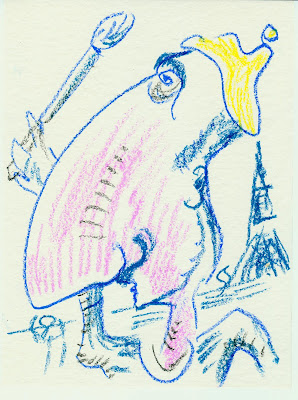Time to let my over-fertile imagination/subconscious have free rein. This is a collection of largely semi-abstract images I concocted in the late 1980s, while working as a reporter in Port Elizabeth. I guess they offered an escape from the harsh reality of a country in crisis and my own personal relationship hiatus.

Jung. Freud. All of them. They would know why I arrived at images loaded with breasts and other female attributes.
And not all of them were beautiful.
Though some were.
Just another poor boy.
And another.
You do. You see faces in things and then you expand on them.
This blue border suggested two profiles, one black, one white. This was the late 1980s, remember, in apartheid SA.
Why do some pieces of paper age so badly, and others not? Could the wool be greasy?
Even this half-shod fellow couldn't escape a pair of boobs attaching themselves to him.
I've just seen a face ... No, I'm not referring to the Beatles song. This is a man - no mistaking that - but I see a profile in his left trouser leg for the first time.
Pity those who live inland. Ships at sea are one of the great visual delights.





















































